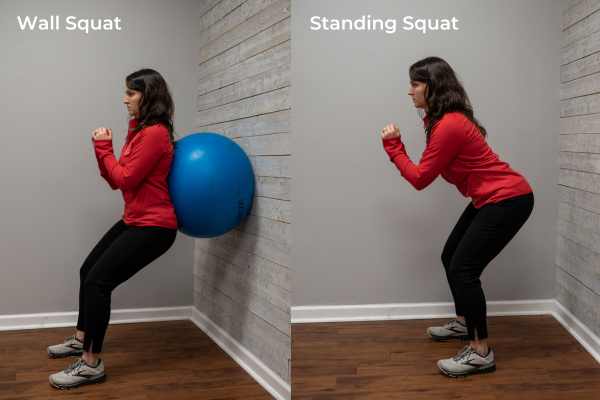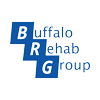Wall vs Standing Squats: Choose Wisely
Unfortunately, somewhere along the way, its form has been lost.
Compensations of bending through the spine override squatting — and the term itself generally results in an eye roll and visions of damaged, arthritic knees.
True, once the damage is done, squatting can be a dreadful activity, but for those of us who are capable, it can be an effective exercise to strengthen the hips and protect the spine.
Squatting: Your Form Matters
For those who choose to squat, the technique is of utmost importance.
How you squat directly determines muscle activation and the stress you apply to the knees.
Squats are usually performed in one of three ways: freestanding, at the wall, or on one leg.
Like any exercise, they can be performed improperly.
Too often, a wall squat is used to substitute for a free-standing squat. Gymgoers justify the change to account for poor balance.
So, could such a seemingly insignificant change (from free-standing to the wall) make that much of a difference?
Simply put, yes!

Squatting: Wall vs. Standing
Performing wall squats has been shown to diminish muscle recruitment in our gluteal or back-of-the-leg muscles (1).
Our gluteal muscles are some of the most significant and powerful in the body. They push you up the stairs, fire you out of your chair, and help you lift. Without strength in our hips, our low back and knees pick up the slack. Glute weakness has been shown to increase our risk for low back pain, lower extremity pain, and even distal injuries at the ankle. Weak gluteal muscles are also related to poor physical performance (2, 3).
Ask any clinician about the glutes and they’ll likely stress their importance. Engaging your glutes is often a challenge, so why intentionally turn them off?
Now you may be wondering, why do wall squats deactivate our gluteal muscles? The answer lies within your body’s amazing ability to conserve energy. If your muscles don’t have to work they will purposely turn off.
When performing wall squats with or without a ball you’re adding external stability. There is zero need for the glutes to engage. Also, your tendency will be to push from the front of your thigh (knee extensors), essentially negating your glutes from activating. Pushing yourself into the wall is almost exclusively a quadricep, or knee extensor, activity.
Let’s compare the two a little more, but this time putting the actual movement under the microscope. Which movement do you actually perform throughout the day: sliding up and down a wall or squatting? Easy, a squat. You squat to lift, get in or out of your car, or when getting up from a chair. Regular squats will carry over to life.
You Can Perform Squats!
Now, I understand performing a squat is not for everyone. Creaking and cracking joints can prevent you from squatting altogether, but that’s extreme. Many of us can perform squats safely and painlessly if done properly or with simple modifications. Don’t let joint crackles deter you. If pain isn’t associated with clicking or cracking you’re okay to proceed cautiously.
There are multiple ways to modify squats based on depth and foot placement. A simple hand touching a wall can offload body weight while providing a small amount of external support. Staggering a weaker or painful knee six inches forward can also be the ticket to performing a squat pain-free. Doing so decompresses the knee, making the task easier. As you improve plan to slide the feet back to an even stance.
The prior two examples are only a few of the countless ways to modify your squats for success.
As the old saying goes, “If you’re going to do something, then do it right.” So, if you’re going to perform squats as part of your exercise routine, then take the time and do them right. Your body will thank you for it.
References
- Hinds, E. The additional effects of swiss ball use during the wall squat exercise on lower limb muscle activity. Br J Sports Med 2011; 45(2).
- Leetun DT, Ireland ML, Willson JD, et al. Core stability measures as risk factors for lower extremity injury in athletes. Med Sci Sports Exerc 2004; 36 (6): 926-34.
- Vakos JP, Nitz AJ, Threlkeld AJ, Shapiro R and Horn T (1994): Electromyographic activity of selected trunk and hip muscles during a squat lift. Spine 19(6), 687-695.
Want help with your squat form?
Treatment is covered by insurance, no referral is needed to start, and with flexible virtual or in-clinic appointments, you can find a time that works with your schedule.
Call 716-458-1990 or click here to schedule online:
